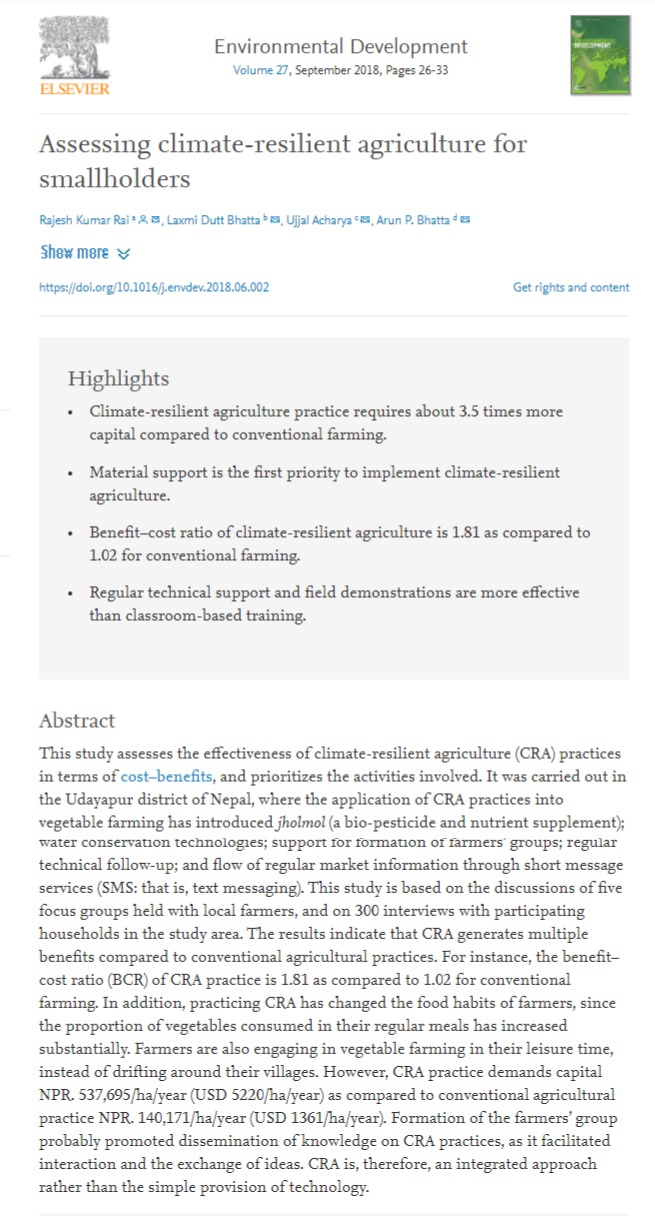
This study assesses the effectiveness of climate-resilient agriculture (CRA) practices in terms of cost–benefits, and prioritizes the activities involved. It was carried out in the Udayapur district of Nepal, where the application of CRA practices into vegetable farming has introduced jholmol (a bio-pesticide and nutrient supplement); water conservation technologies; support for formation of farmers’ groups; regular technical follow-up; and flow of regular market information through short message services (SMS: that is, text messaging). This study is based on the discussions of five focus groups held with local farmers, and on 300 interviews with participating households in the study area. The results indicate that CRA generates multiple benefits compared to conventional agricultural practices. For instance, the benefit–cost ratio (BCR) of CRA practice is 1.81 as compared to 1.02 for conventional farming. In addition, practicing CRA has changed the food habits of farmers, since the proportion of vegetables consumed in their regular meals has increased substantially. Farmers are also engaging in vegetable farming in their leisure time, instead of drifting around their villages. However, CRA practice demands capital NPR. 537,695/ha/year (USD 5220/ha/year) as compared to conventional agricultural practice NPR. 140,171/ha/year (USD 1361/ha/year). Formation of the farmers’ group probably promoted dissemination of knowledge on CRA practices, as it facilitated interaction and the exchange of ideas. CRA is, therefore, an integrated approach rather than the simple provision of technology.